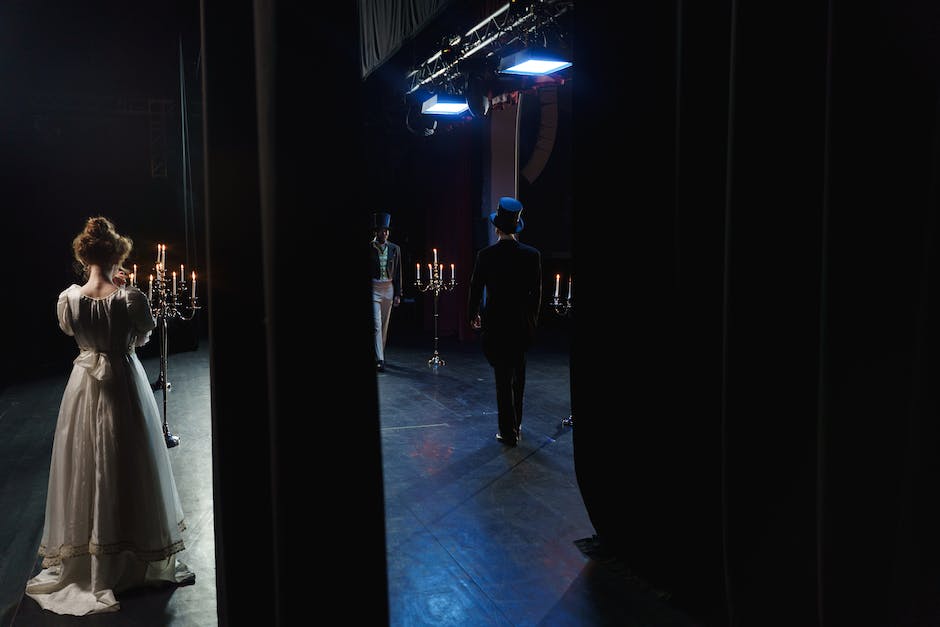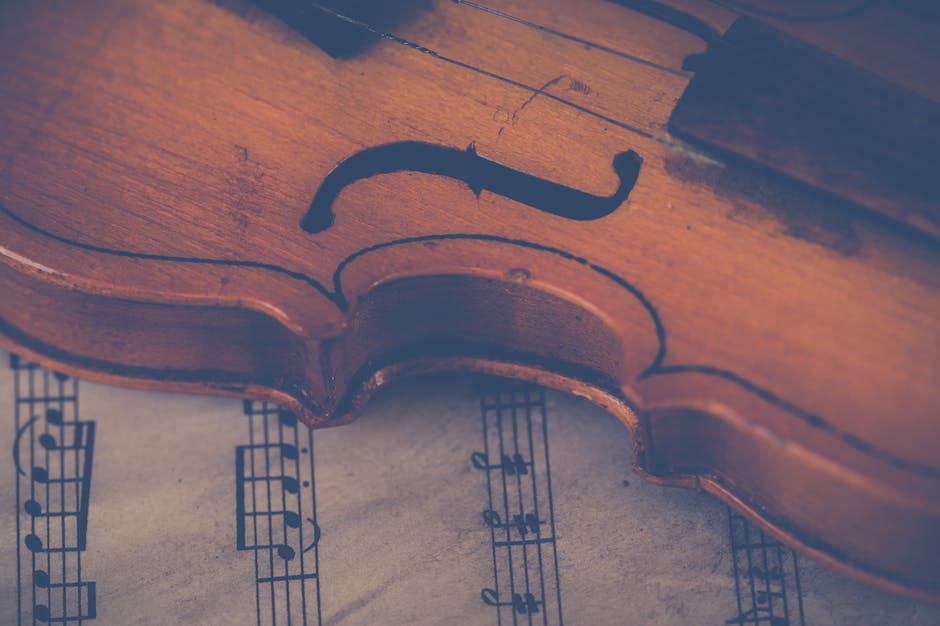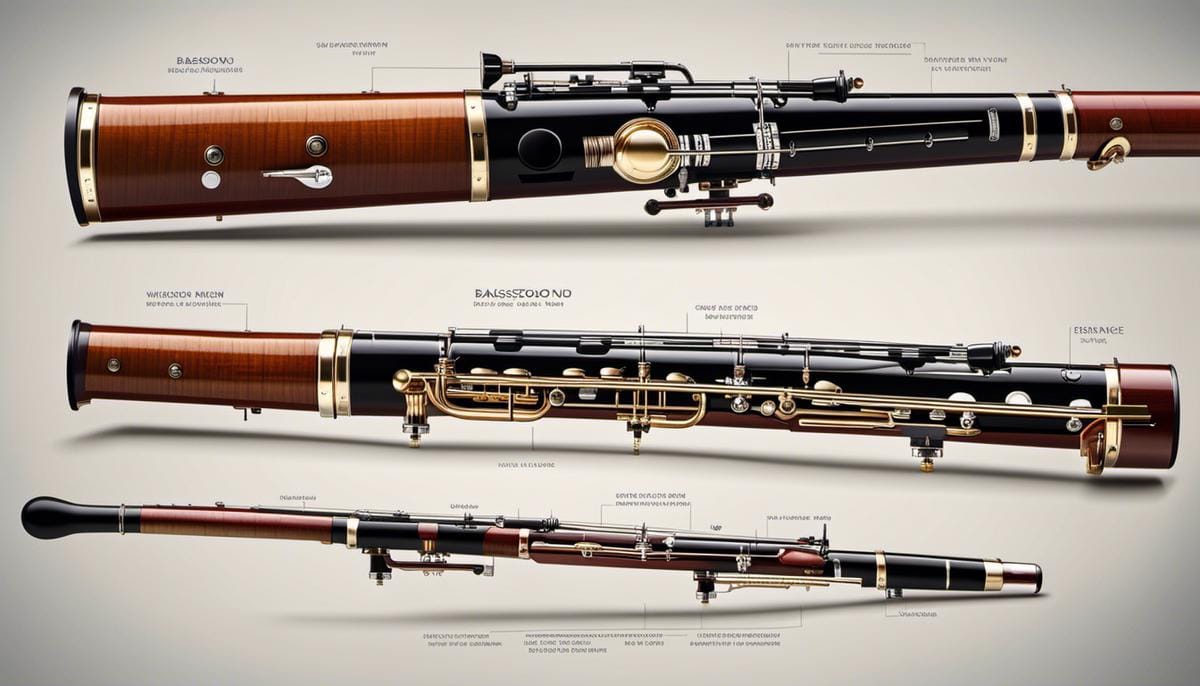Table of Contents
Introduction
Welcome to the world of bassoon duets! The bassoon’s rich history and complexity takes time to understand. This comprehensive guide explains the fundamentals of the bassoon, including its range, maintenance, and tuning; as well as dives into the nuances of bassoon duet sheet music interpretation.
First, lets begin with a few duets that you can at a look at.
8 Bassoon Duets
Here are eight sets of bassoon duets that you can enjoy:
- Beatty’s “Duet for 2 Bassoons in D minor, Op.2755”
- Link
- Summary: A classical piece written in D minor, this duet showcases the versatility and depth of the bassoon. The composition is characterized by its intricate melodies and harmonies, making it a favorite among bassoonists.
- Beatty’s “Duet for 2 Bassoons, Op.247”
- Link
- Summary: Another masterpiece by Beatty, this duet is known for its melodic lines and harmonious interplay between the two bassoons. It’s a piece that challenges the performers while providing a delightful auditory experience for the listeners.
- “15 Bassoon Duets For Fun (popular Classics)”
- Link
- Summary: This collection features popular classics adapted for bassoon duets. Composers include Newton, Ugolino, Henry Purcell, Johann Sebastian Bach, Ludwig Van Beethoven, Leo Delibes, George Frideric Handel, and Frank W. Meacham. The pieces vary in levels, making it suitable for bassoonists of different skill levels.
- Paulinyi, Zoltan’s “Biduo d’Ouro”
- Link
- Summary: “Biduo d’Ouro” is a versatile piece that allows for a bassoon to be paired with any other instrument. The composition showcases the adaptability of the bassoon in ensemble settings, blending seamlessly with various instrumental timbres.
- Roussel, Albert’s “Duo for Bassoon and Double Bass”
- Link
- Summary: This duet brings together the deep, resonant sounds of the bassoon and double bass. The piece is characterized by its rich harmonies and rhythmic interplay, highlighting the unique combination of woodwind and string instruments.
- Gossner, Samuel Arthur’s “Bassoon Duet No.2”
- Link
- Summary: Part of a series of bassoon duets by Gossner, this piece showcases the melodic capabilities of the bassoon. The duet is known for its harmonious interplay and intricate phrasing, making it a favorite among bassoonists.
- Ozi, Étienne’s “6 Bassoon Duets”
- Link
- Summary: A collection of six duets, these pieces by Ozi offer a range of styles and moods. From lively allegros to somber adagios, the collection provides bassoonists with a comprehensive exploration of the instrument’s duet repertoire.
- Tulou, Jean-Louis’ “6 Bassoon Duets”
- Link
- Summary: Another collection of six duets, these compositions by Tulou delve into the classical era’s stylistic nuances. The pieces are characterized by their melodic lines and structured form, offering bassoonists a chance to delve into classical ensemble playing.
These duets not only showcase the versatility of the bassoon but also highlight the instrument’s capability to blend and harmonize with various other instruments. Whether performed in a formal concert setting or as part of an educational ensemble, these pieces offer both challenge and enjoyment to bassoonists.
Understanding the Bassoon and its Range
Fundamentals and Functionality
The bassoon is a woodwind instrument known for its distinctive tone and wide range. Part of the double-reed family, which also includes the oboe and English horn, the bassoon has a unique, rich sound, often described as having a dark and reedy timbre. Its construction is intricate, composed of a conical tube doubled in half and fashioned from wood, with a complex system of keys and finger holes that control the pitch.
The instrument has a wide pitch range – the standard bassoon can play notes over a range of almost four octaves: Bb1 (the first B flat below the bass staff) to E5 (the E above the treble staff). Its versatility means it often plays harmony in an orchestra but it can also perfectly carry a melody. For duets, this extensive range provides a lot of possibilities, as it can easily blend with other instruments, including another bassoon.
The Technique behind Playing the Bassoon
Playing the bassoon requires mastering several techniques, including finger and embouchure control, intonation, breathing, and tonguing. As with most instruments, ongoing practice is necessary to refine and maintain these skills. A bassoonist must learn to quickly and accurately move their fingers across the keys, as well as mastering the technique of partially covering finger holes for pitch alteration.
Invest in Regular Maintenance and Tuning
Just like any musical instrument, bassoons require regular maintenance and tuning to function properly and produce the best sound quality. This maintenance includes swabbing the inside of the instrument after each use to remove moisture, inspecting the reeds for damage, and periodically oiling the keys to prevent them from rusting. Replacing worn-out reeds also ensures that the instrument maintains its sound quality and the musician can produce accurate pitches.
As for tuning, the bassoon doesn’t come with a built-in tuning mechanism, so the bassoonist must adjust the pitch by extending or shortening the reed on the bocal, or by varied embouchure pressure, breath support, and the speed and volume of airflow.
The player must become attuned to the sound of their instrument and learn to identify when it is out of tune, sharpening or flattening notes as required. This is something learned over time and develops with in-depth study and persistent practice.
Mastering the Art of Bassoon Duets
Taking on bassoon duets introduces an extra component of difficulty to performing as it adds requisite cooperation, concentration, and syncing of both respiratory rhythm and technical skills. It calls for a grasp of your musical companion’s rhythm and style, as well as your capability to modify your approach to suit theirs. High level communication is key, as it’s crucial that both players comprehend each other’s interpretive perspectives and align their techniques for a blended performance.
Studying and performing bassoon duets is more than just a test, it’s a chance to broaden musical comprehension and develop as a performer. Whether you’re playing for pleasure or for a formal occasion, bassoon duets offer musicians the opportunity to display their abilities, originality, and cooperation.
Exploring the Classics
Classical Bassoon Duets: Insights to Remember
Hello there! Jumping into classical bassoon duets requires a fundamental comprehension of the bassoon’s part within a symphony orchestra setting. Often taking the spotlight in duets and solos, the unique tonal characteristics of the bassoon lay the groundwork for the performance’s melody and tonal texture. Recognized for their distinctive warm tone, bassoons bring richness to any musical piece.
Famed Composers In Bassoon duets
An array of composers, including the likes of Mozart, Beethoven, and others, have utilized the expressive capabilities of the bassoon in their works. Wolfgang Amadeus Mozart, a prolific and influential composer of the classical era, penned a number of pieces featuring the bassoon, including his Bassoon Concerto in B flat.
Ludwig van Beethoven, a crucial figure in the transition between classical and romantic eras in Western art music, also made significant contributions to the repertoire of bassoon music. His works demonstrate a deep understanding of the instrument’s tonal range and technical attributes.
Exploring Techniques and Styles in Classical Bassoon Duets
Classical bassoon duets demand a high level of technique, including precise finger dexterity, control of the embouchure, awareness of intonation, and a comprehensive understanding of rhythm and phrasing. Each piece is an exploration of different tonal landscapes and harmonic progressions that push the boundaries of two bassoonists’ skills and musical understanding.
There’s a wide range of styles within classical bassoon music, from highly rhythmic and energetic pieces to more lyrical and expressive compositions. The fluid character of the bassoon allows for versatility across various styles, each requiring a nuanced approach towards rhythm, dynamics, and phrasing to effectively convey the musical intentions of the composer.
Mastering the Art of Classical Bassoon Duets
Mastering classical bassoon duets involves more than just technical skill; it also calls for an artistic touch to resonate with the music and engage the audience. It is essential to understand the historical backdrop, the composer’s intent, and the inherent musical components to deliver a compelling performance. Besides, bassoonists need to realize the significance of harmonizing as a team, merging their sounds as required, and enhancing each other’s melody lines, all while preserving individual expressivity.
In a nutshell, these are the fundamental aspects of grasping and interpreting classical bassoon duets. Though this music genre demands high technical and interpretive competency, it reciprocates with rewarding, rich, and deeply gratifying musical journeys.

Interpreting Bassoon Sheet Music
Demystifying the Complexities of Bassoon Duet Sheet Music
Unlocking the enigma of bassoon duet sheet music commences with an in-depth understanding of music notations. The bassoon staff comprises various quarter, half, whole, and eighth notes. These notation symbols determine the sound duration, or rhythm. For example, a whole note is equivalent to either two half notes or four quarter notes. Such accurate comprehension of these specifications and their distinctions is vital for bassoon duets, as it enables musicians to seamlessly adapt to the diverse melodies and harmonies occurring simultaneously in the duet.
Navigating Key Signatures
As a bassoon player, it’s essential to understand how key signatures work. Key signatures come in the form of sharps(#) and flats(b) and are found immediately following the clef. These indicate the key in which the duet is set, which is essential in shaping the melody and harmony of your play along with your partner. Bassoon duets may require switching the key signatures in middle of the music sheet, therefore, it’s important to be always attentive of these changes to harmonize well with your duet partner.
Deciphering Time Signatures
Time signatures in sheet music are like a meter in poetry; they dictate the rhythm of the music piece. They come in numerical pairs, such as 2/4 or 4/4. The top number refers to the number of beats per measure, while the bottom number indicates which note gets a beat. For instance, a 4/4 time signature means there are four beats in every measure, and a quarter note receives one beat. Familiarize yourself with various time signatures to sync your parts correctly in a bassoon duet.
Mastering Dynamics in Bassoon Duets
Beyond notations, key signatures, and time signatures, dynamics add depth and emotion to music. Dynamics are music notations such as “p” for “piano” (soft) or “f” for “forte” (loud), among many others. They dictate how loudly or softly a note or a series of notes should be played. In bassoon duets, dynamic markings immensely affect the teamwork between two individuals. Both players must work together by following the dynamics to create a successful, harmonious piece.
Interpreting Articulations and Ornamentation Markers
Articulations include symbols such as staccato (.) or tie which instruct the player on how to play a particular note, whether it should be short, long or connected smoothly to the next. Ornamentation markers such as grace notes, trills or arpeggios add expressive character to the composition. They hold particular significance in bassoon duets due to the more complex harmonies.
Diving into the realm of bassoon duets means understanding the components of sheet music and interpreting them in a way that breathes life into the notes. This understanding, when thoroughly acquired, sets you on the path to delivering stunning performances together with your duet partner. Picking up your bassoon and immersing yourself in the intricacies of duet sheet music is the beginning of this exciting musical journey.
Practicing Techniques for Duets
The Role of Articulation
Articulation is pivotal in bassoon duets. It shapes the personality of the piece and dictates how it’s received by the listener. Manipulating the character of individual notes through techniques such as the crisp, punctuated staccato or the flowing, unified legato directly influences the duet’s overall sound. Perfecting these techniques, which range from clear and distinct tonguing for staccato to uninterrupted airflow for legato, demands concerted practice. The enchantment of the duet lies in harmonious synchronicity, with each player’s articulation effortlessly aligning with their partner.
Phrasing Strategies for Bassoon Duets
Phrasing is another crucial aspect in bassoon duet performance that requires consistent practice. Phrasing refers to the musical sentences or phrases that dictate musical expression and articulation. Musicians learn to play and pause at certain points for dramatic effect, similar to spoken language. For effective duet performance, both players must communicate and agree upon phrasing strategies. By marking phrase beginnings and ends, duet players can achieve a synchronized performance.
Prioritizing Breathing in Bassoon Duets
Breathing technique is crucial to wind instrumentalists. For bassoonists, it’s about taking deep breaths and learning to control the exhalation to produce a steady, consistent sound. During duet practice, coordinating breathing with your partner is key as discrepancies can throw off the rhythm or flow of the performance. Planning and marking breath points in the sheet music can help ensure both players breathe together.
Intonation Practices for Bassoon Duets
In bassoon duets, good intonation is paramount. It’s about playing in tune with each other. This can be challenging with bassoons as their pitch changes with temperature and humidity. Practicing with a tuner can be helpful in mastering intonation. Also, regularly playing long tones together as a part of warm-up can support tuning to each other’s pitch.
Coordinating With a Duet Partner
Playing in a duet calls for a strong sense of teamwork and communication. Regularly practicing together allows you to understand your partner’s playing style and adapt accordingly. Communication is key, not just during practice but also in giving and receiving constructive feedback. This allows for constant improvement and growth as a duet.
Perfecting Rhythm and Harmony in Bassoon Duets
Mastering rhythm and harmony in bassoon duets is integral to beautiful music. This encompasses the pulse and pleasant synchronization of notes. Start your journey by independently practicing with a metronome to ensure a steady and consistent rhythm prior to joint sessions. Make sure to familiarize yourself with musical intervals as they provide the building blocks for developing a harmonious sound. Achieving harmony in a duet demands that you comprehend and balance each side of the duet to enhance their complementary nature. Remember, consistent practice, gaining an understanding of mutual parts and effective communication are key ingredients to honing perfect rhythm and harmony in bassoon duets.

Performing Bassoon Duets
Deciphering Roles in Bassoon Duets
Performing a bassoon duet requires a clear understanding of your specific role. Typically, the first and second bassoon parts are distinct, each serving different functions within the performance, yet they must harmonize to produce a united and graceful sound. The first bassoon is generally responsible for carrying the melody, dictating the direction of the music, and presenting the main themes. Conversely, the second bassoon provides the much-needed harmonic base, offering steady rhythmic and tonal pillars to the first part’s melody. Hence, it’s crucial to meticulously analyze your part and understand how it intertwines with your partner’s to yield a harmonious performance.
Stage Setup for Bassoon Duets
The physical arrangement of performers on stage is an important consideration for bassoon duets. Ideally, both performers should position themselves where they can easily see and hear each other, which helps them maintain the necessary coordination throughout the performance. On a practical level, each player should have a secure place for their instrument, music stand, and any necessary accessories like reeds or swabs. It’s recommended to arrange the stage setup before the day of the performance so that there are no surprises.
Managing Performance Anxiety
Performance anxiety is a common part of performing in any context, including bassoon duets. It’s essential to remember that this anxiety is perfectly normal and can be controlled with various methods. Regular practice and preparation can reduce the possibility of forgetting parts or making mistakes, leading to lower anxiety levels. Mental visualization techniques can also be helpful, where performers imagine a successful performance scenario. Mild physical exercises and deep breathing exercises before the performance can help lessen tension and induce relaxation.
Performance Etiquette for Bassoon Duets
Proper performance etiquette is integral when presenting a bassoon duet. It involves professional behavior on and off the stage. For instance, it’s good etiquette to tune your instrument discreetly and before walking onto the stage. Neat and formal dress code, punctuality, and reverence for the performing space are also part of good performance etiquette. When performing, make sure to acknowledge your partner and the audience with a nod or bow. Remember to never turn your back to the audience when moving on stage. Avoid unnecessary movement or noise when your partner is playing.
Advanced Study in Bassoon Duets
Becoming skilled in bassoon duets requires a strong understanding of the instrument and considerable practice time. Listening to professional duets and working with a skilled teacher can help keen enthusiasts to refine their technique and performance skills. Luckily, there are several resources available today, including online music libraries, instructional videos, and dedicated music training programs. Bassoon duets can be challenging but also offer a rewarding way to improve your musicianship, technique, and performance skills.

Conclusion
Embarking on the journey of mastering bassoon duets can be an enriching and rewarding endeavor. Building a firm foundation on the understanding of this versatile instrument and exploring the timeless classics offers a profound appreciation of its beauty and complexity. Developing proficiency in music sheet interpretation and practicing techniques equips you to create enchanting harmony with your duet partner.
However, remember, the true magic happens when you step on the stage and the spotlight is on. Handling your performance, managing stage anxieties, and understanding your unique role in the duet make your musical voyage truly come full circle. So, whether you are playing a Mozart, a Beethoven, or practicing basic scales and arpeggios, remember, every note tells a story. Let the music play!
Additional Reading
Now that you’ve learned about music industry jobs, take some time to check out our other articles:
- How the Pending US Tariffs Impact the Music Industry (2025)
- Chart-Topping Deals: Musicians Who Sold Their Catalogs
- Tips On How To Earn 1000 Dollars a Month from Music in 2024
- Legends of Jazz: Unveiling the Most Influential Jazz Musicians of the 20th Century
- 10 Most Influential Music Producers of All Time
Breve Music Studios publishes music to Spotify, YouTube Music, Amazon Music and more. Follow our pages on Facebook, Instagram, Twitter, TikTok, and YouTube.
Listen to our ensembles: Breve Orchestra, Breve Music Ensemble, Breve Low Brass Ensemble, Breve Woodwind Ensemble, and Jermaine Harris on Spotify.

